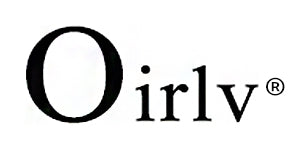
Wholesale Jewelry Packaging
Share
In the world of jewelry, nobody sees a whole process because the jewelry looks like the divine treasure that you have to show off and expose its beauty together with who wears it. However, the jewelry world is much more extensive, and, therefore, we must consider a factor that we cannot let go unnoticed: the packaging.
To begin with, jewelry packaging refers to everything necessary in the process of packaging the products and protecting them. This is to group them temporarily or permanently and consider their handling, transport, and storage.
Characteristics
- Protection from certain risks: Mechanical, climatic, storage, handling, and even theft.
- Protection of the products: During the transport and storage of the package.
- Identification: Ease of finding a product, either because of its information or characteristics. It seeks to reduce deterioration and loss of it.
- Handling: Facilitates counting, distribution, care, and transportation.
Is jewelry packaging the same as packaging?
No, it's not the same at all. Packaging is the procedure that prepares the safe handling of the product during transport or storage, and of course, this process focuses on logistics.
On the other hand, the container refers to the container that contains, protects, and makes the commercial presentation of the merchandise, that is, the place where the product will go.
Packing levels
Any jewelry packaging can be identified at three levels: Primary, Secondary, and Tertiary.
Primary: Refers to direct contact with the product.
Secondary: It is the one that contains one or more primary packages.
Tertiary: Groups and unifies the above in a container to protect them during distribution.
Packaging types

We know that jewelry is a term that encompasses endless materials with various precious metals, where prices are variable and so used.
However, when we talk about packaging, the ideal would be to do it based on the type of product and the materials used to manufacture it; although that would be the correct thing to do, the reality is that it would also be costly. Therefore, we always recommend generalizing a jewelry packaging that adapts to all (or most) the types of products that you sell.
Some of the most famous jewelry packagings are:
-
Wooden packaging
This type of packaging is the perfect option for those products that require special protection. In addition to that, they look very luxurious and careful. We can find it in models of boxes, rings, frames, and wooden panels.
-
Cardboard packaging
When we seek to save, this option is the ideal one. In addition, its packaging is valuable and adaptable to various types of sizes and shapes, considering the thickness and the convenient channel (simple, double, or triple). The multiple formats in which it can be found are the famous cardboard box, cardboard envelope, and shipping tubes.
-
Paper packaging
This type of jewelry packaging is a perfect complement that goes inside the main box to protect our product, mainly from external agents, dust, light, stains, humidity. It is extra for high-quality packaging.
-
Plastic packaging
This type of jewelry packaging is the least used because the cost of a plastic container is expensive, although it reduces shipping costs thanks to its lightness and compression. They are mainly used for the wholesale of various products with multiple sizes. We can find this type of packaging in PET, PP, or even PVC.
-
Casual Printed Tote Bags
This is an original and trendy alternative since we can find personalized cloth bags for whatever the client decides, such as logos, names, images, special dates (anniversaries, weddings, etc. The best part? This type of packaging guarantees low prices for packaging and transfers.
The only disadvantage we consider is that it does not safeguard the entire product.
Types of packaging sealing
A perfect complement to all types of packaging is its sealing. Currently, various jewelry franchises use types of sealing based on their image, originality, income, and, of course, what the customer likes!
Among the most common we can find:
- Seals with wax: This works as a large seal, and the transfer is not very far. However, inboxes and plastics look spectacular.
- Stamps or decals: Here, companies seek to generate identity; most use their brand name in a logo or imagotype. This is for the user to remember where they made their purchase and buy in the future. Many of these stamps are usually reusable, so some users have the hobby of collecting them and, therefore, companies renew them seasonally.
- Ribbons: The famous glue does not have to be boring; you can use your favorite transparent glue or glitter or unique patterns.
Finally, we must remember that the most important thing about the packaging is to protect the quality of the products before, during, and at delivery. Good packaging creates trust and loyalty with customers since a well-delivered product guarantees the second-order at the door.

